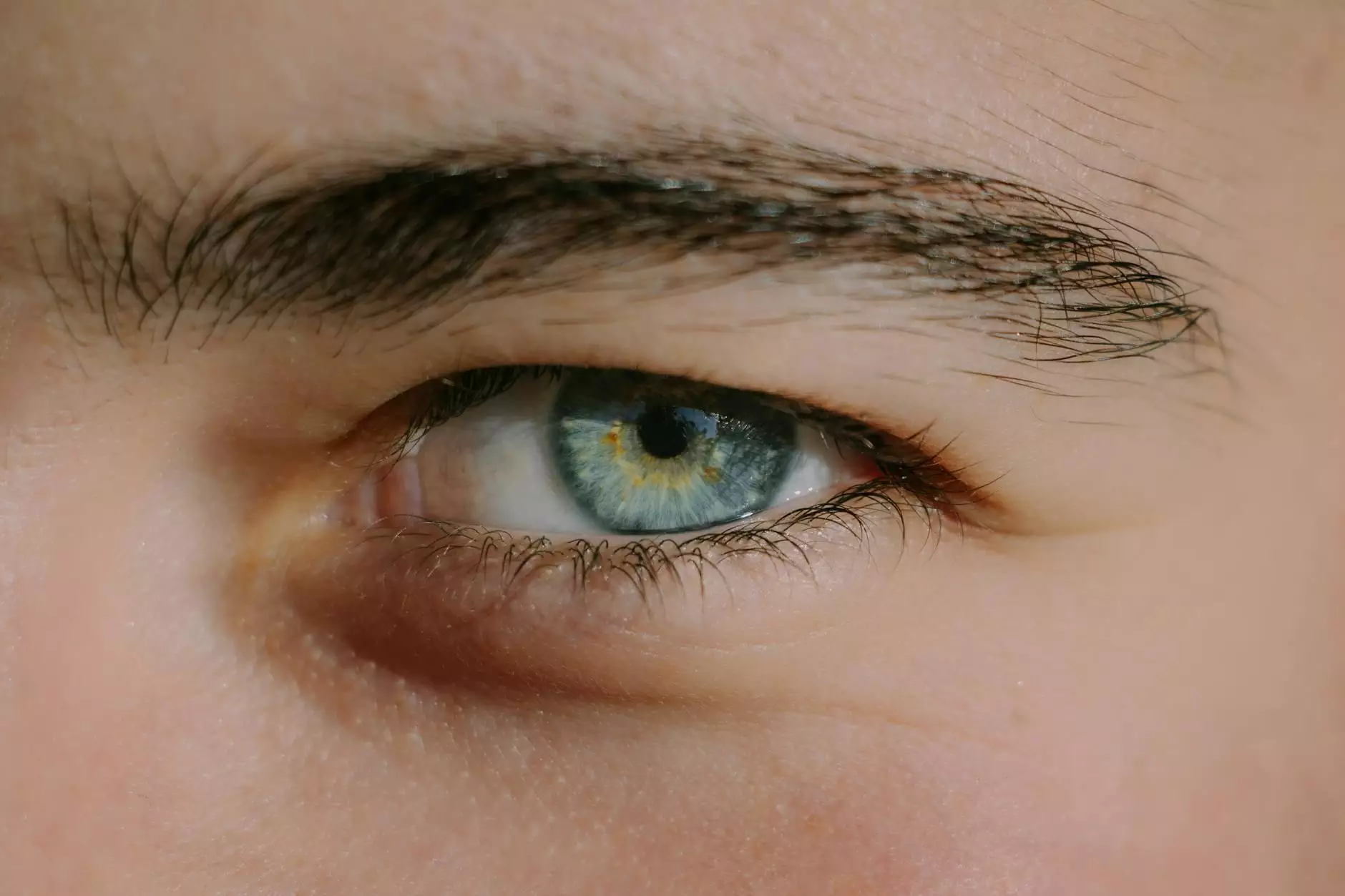Comprehensive Guide to Eyebrow Transplantation: Restoring Confidence and Beauty

In the realm of cosmetic surgery and hair restoration, eyebrow transplantation has emerged as a revolutionary procedure that offers a natural and permanent solution for those suffering from sparse or absent eyebrows. Whether due to genetic factors, over-plucking, or medical conditions, many individuals seek effective methods to restore their eyebrows to regain their youthful and expressive appearance. This detailed guide explores every aspect of eyebrow transplantation, from the procedures involved, benefits, and aftercare, to choosing the right specialist and understanding the latest advances in hair restoration technology.
What is Eyebrow Transplantation?
Eyebrow transplantation is a specialized hair restoration procedure that involves transplanting hair follicles from a donor area—typically the scalp—to the eyebrow region. This technique utilizes the body’s own hair, making the results look completely natural and indistinguishable from original eyebrows. The procedure is highly effective for individuals experiencing eyebrow thinning, patchy eyebrows, or complete hair loss due to various causes.
Understanding the Causes of Eyebrow Hair Loss
Before delving into the details of the procedure, it is essential to understand why eyebrow hair loss occurs. Common causes include:
- Genetic predisposition: Conditions such as patterned hair loss or alopecia can affect eyebrows.
- Frequent removal of eyebrow hair damages hair follicles, leading to decreased growth.
- Medical conditions: Autoimmune diseases like alopecia areata or thyroid disorders can cause hair loss.
- Trauma or injury: Scarring from accidents or surgeries may prevent hair regeneration.
- Medications and treatments: Certain drugs or chemotherapies can induce hair loss in eyebrows.
Understanding the root cause is critical for planning an effective eyebrow transplantation strategy tailored to individual needs.
The Benefits of Eyebrow Transplantation
Opting for eyebrow transplantation offers numerous advantages over traditional cosmetic options such as makeup or tattooing. Notable benefits include:
- Natural appearance: Transplanted hair follicles grow and behave like natural eyebrow hair.
- Permanent solution: Unlike makeup or temporary solutions, the results are long-lasting and grow over a lifetime.
- Customized shape and density: Surgeons can design eyebrows that complement facial features perfectly.
- Minimal maintenance: Once healed, transplanted eyebrows require no special upkeep beyond normal grooming.
- Improved confidence: Restoring eyebrows helps regain self-esteem and facial harmony.
The Process of Eyebrow Transplantation: Step-by-Step Overview
1. Consultation and Planning
The journey begins with an in-depth consultation with a qualified specialist. During this stage, the surgeon assesses the patient’s health, examines the scalp and eyebrow area, and discusses aesthetic goals. Using advanced imaging techniques, they determine the optimal number of grafts and the preferred eyebrow shape, ensuring that the results suit the individual’s facial proportions.
2. Harvesting Hair Follicles
The most common donor site for eyebrow transplantation is the back of the scalp, where hair density is typically high. Depending on the technique chosen—Follicular Unit Extraction (FUE) or Follicular Unit Transplantation (FUT)—hair follicles are carefully extracted with minimal trauma. FUE involves extracting individual follicles via small punch tools, leading to virtually invisible scars and faster recovery.
3. Preparation and Shaping of the Recipient Area
Using fine microblades and precision instruments, the surgeon creates small incisions along the designed eyebrow outline. The direction, angle, and depth of these incisions are meticulously planned to mimic natural eyebrow hair growth patterns, ensuring realistic and aesthetic results.
4. Implanting Hair Follicles
The harvested follicles are then carefully implanted into these incisions. Skilled surgeons place each follicle individually to achieve the desired density, arch, and length. The skill and artistry involved in this step are crucial for a natural appearance.
5. Post-Procedure Care and Recovery
After the procedure, patients are provided with detailed instructions on caring for their new eyebrows. Typically, mild swelling, redness, or scabbing may occur but resolve quickly. Proper aftercare ensures healthy follicle growth and minimizes risks of infection or folliculitis.
Expected Results and Timeline for Eyebrow Transplantation
Patients can expect the transplanted hair follicles to shed within the first few weeks post-surgery—that’s a normal part of the process. New, permanent hair growth usually becomes visible after 3 to 4 months, with full results apparent around 6 to 12 months. The transplanted hairs continue to grow naturally and can be trimmed, shaped, or styled as desired.
Advanced Techniques in Eyebrow Transplantation
Modern advancements have significantly improved the outcomes of eyebrow transplantation. These include:
- FUE and FUT combined approaches: Allowing for tailored graft extraction for better density and minimal scarring.
- Robotic hair transplantation: Utilizing robotic systems for precise follicle extraction and placement, reducing human error.
- Hair cloning and stem cell therapy: Promising future techniques aimed at increasing donor hair supply and enabling larger grafts in fewer sessions.
- Pedicled flap and scalp micropigmentation: Complementary techniques to enhance aesthetic outcomes.
The Importance of Choosing the Right Specialist
Since eyebrow transplantation is a delicate and highly artistic procedure, selecting a highly experienced and qualified surgeon is vital. Look for:
- Board certification: Surgeons certified by reputable medical boards specialized in hair restoration.
- Portfolio of previous work: Before-and-after photos demonstrating skill and natural results.
- Patient reviews and testimonials: Feedback from previous clients helps gauge satisfaction and professionalism.
- Advanced training: Knowledge of the latest techniques and tools ensures optimal results.
Post-Transplant Care and Long-Term Maintenance
Ensuring the longevity and full development of transplanted eyebrows requires adherence to post-surgical instructions. Key points include:
- Gentle hygiene: Keeping the area clean and avoiding harsh chemicals or aggressive rubbing.
- Protection from sun exposure: Use of SPF to prevent damage to sensitive new hair follicles.
- Proper grooming: Regular trimming and styling as needed, but avoiding over-plucking or chemical treatments initially.
- Follow-up appointments: Scheduled check-ups to monitor healing and address any concerns promptly.
Is Eyebrow Transplantation Right for You?
Ideal candidates for eyebrow transplantation include individuals with:
- Significant eyebrow hair loss due to medical conditions
- Thinning eyebrows caused by aging or genetics
- Irregular or asymmetrical eyebrows
- Scalp or other body hair with sufficient density for harvesting
- Realistic expectations about the outcomes
Conclusion: Embrace Fresh Confidence with Expert Eyebrow Transplantation
Eyebrow transplantation is transforming lives by offering a permanent, natural solution for eyebrow hair loss. Combining advanced techniques, personalized care, and expert artistry, leading clinics like hairtrans.net provide exceptional results tailored to individual needs. If you’re ready to redefine your look, restore your confidence, and enjoy youthful vibrancy, consider consulting a trusted specialist for a comprehensive evaluation. Achieve the eyebrows you’ve always dreamed of — naturally, safely, and effectively.
Remember, choosing the right medical center and practitioner is critical to your success. Be informed, ask questions, and prioritize quality and experience. Your journey to beautiful, natural eyebrows begins with the right knowledge and expert guidance.









